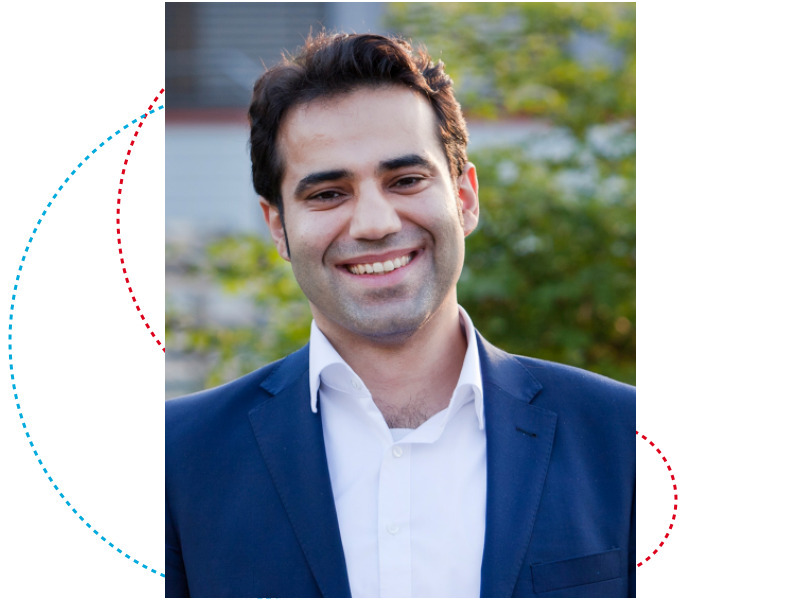Perovskites have emerged as low-cost, high efficiency photovoltaics with certified efficiencies of 25.2% approaching already established technologies. The perovskites used for solar cells have an ABX3 structure where the cation A is methylammonium (MA), formamidinium (FA), or cesium (Cs); the metal B is Pb or Sn; and the halide X is Cl, Br or I. Unfortunately, single-cation perovskites often suffer from phase, temperature or humidity instabilities. This is particularly noteworthy for CsPbX3 and FAPbX3 which are stable at room temperature as a photoinactive “yellow phase” instead of the more desired photoactive “black phase” that is only stable at higher temperatures. Moreover, apart from phase stability, operating perovskite solar cells (PSCs) at elevated temperatures (of 85 °C) is required for passing industrial norms.
Recently, double-cation perovskites (using MA, FA or Cs, FA) were shown to have a stable “black phase” at room temperature.(1,2) These perovskites also exhibit unexpected, novel properties. For example, Cs/FA mixtures supress halide segregation enabling band gaps for perovskite/silicon or perovskite/perovskite tandems.(3) In general, adding more components increases entropy that can stabilize unstable materials (such as the “yellow phase” of FAPbI3 that can be avoided using the also unstable CsPbI3). Here, we take the mixing approach further to investigate triple cation (with Cs, MA, FA) perovskites resulting in significantly improved reproducibility and stability.(4) We then use multiple cation engineering as a strategy to integrate the seemingly too small rubidium (Rb) (that never shows a black phase as a single-cation perovskite) to study novel multication perovskites.(5)
One composition containing Rb, Cs, MA and FA resulted in a stabilized efficiency of 21.6% and an electroluminescence of 3.8%. The Voc of 1.24 V at a band gap of 1.63 eV leads to a very small loss-in-potential of 0.39 V, one of the lowest measured on any PV material indicating the almost recombination-free nature of the novel compound. Polymer-coated cells maintained 95% of their initial performance at 85°C for 500 hours under full illumination and maximum power point tracking. This is a crucial step towards industrialisation of perovskite solar cells.
Lastly, to explore the theme of multicomponent perovskites further, molecular cations were revaluated using a globularity factor. With this, we calculated that ethylammonium (EA) has been misclassified as too large. Using the multication strategy, we studied an EA-containing compound that yielded an open-circuit voltage of 1.59 V, one of the highest to date. Moreover, using EA, we demonstrate a continuous fine-tuning for perovskites in the “green gap” which is highly relevant for lasers and display technology.
The last part elaborates on a roadmap on how to extend the multication to multicomponent engineering providing a series of new compounds that are highly relevant candidates for the coming years.(6)
(1) Jeon et al. Nature (2015)
(2) Lee et al. Advanced Energy Materials (2015)
(3) McMeekin et al. Science (2016)
(4) Saliba et al., Cesium-containing triple cation perovskite solar cells: improved stability, reproducibility and high efficiency. Energy & Environmental Science (2016)
(5) Saliba et al., Incorporation of rubidium cations into perovskite solar cells improves photovoltaic performance. Science (2016).
(6) Turren-Cruz et al. Methylammonium-free, high-performance and stable perovskite solar cells on a planar architecture Science (2018)
Biography:
Michael Saliba is a professor at the Technical University of Darmstadt, with a dual appointment at the Research Center Jülich, Germany. His research focuses on a deeper understanding and improvement of optoelectronic properties of emerging photovoltaic materials with an emphasis on perovskites for a sustainable energy future. He was a group leader at the Adolphe Merkle Institute in Fribourg, Switzerland from 2018-2019. From 2015‐2017, he was a Marie Curie Fellow at EPFL (with a research visit at Stanford University). He studied mathematics and physics at Stuttgart University (BSc) as well as physics at the Max Planck Institute for Solid State Research (MSc, simulation methods for plasmonic oligomers). He completed his PhD at Oxford University in 2014 (with a research visit at Cornell University) working on crystallisation behaviour and plasmonic nanostructures in perovskites.He has an h-index of 49 and published over 100 works in the fields of plasmonics, lasers, LEDs, and perovskite optoelectronics. Times Higher Education considers him the 3rd most influential scientist in perovskite research based on number of publications and quality. He is also on the 2018 and 2019 list of ISI Highly Cited Researchers. He was also named as one of the World’s 35 Innovators Under 35 by the MIT Technology Review for his pioneering discoveries in the field of perovskite solar cells and optoelectronics. In 2018, he was selected as a Member of the Global Young Academy and the National Young Academy of Germany
